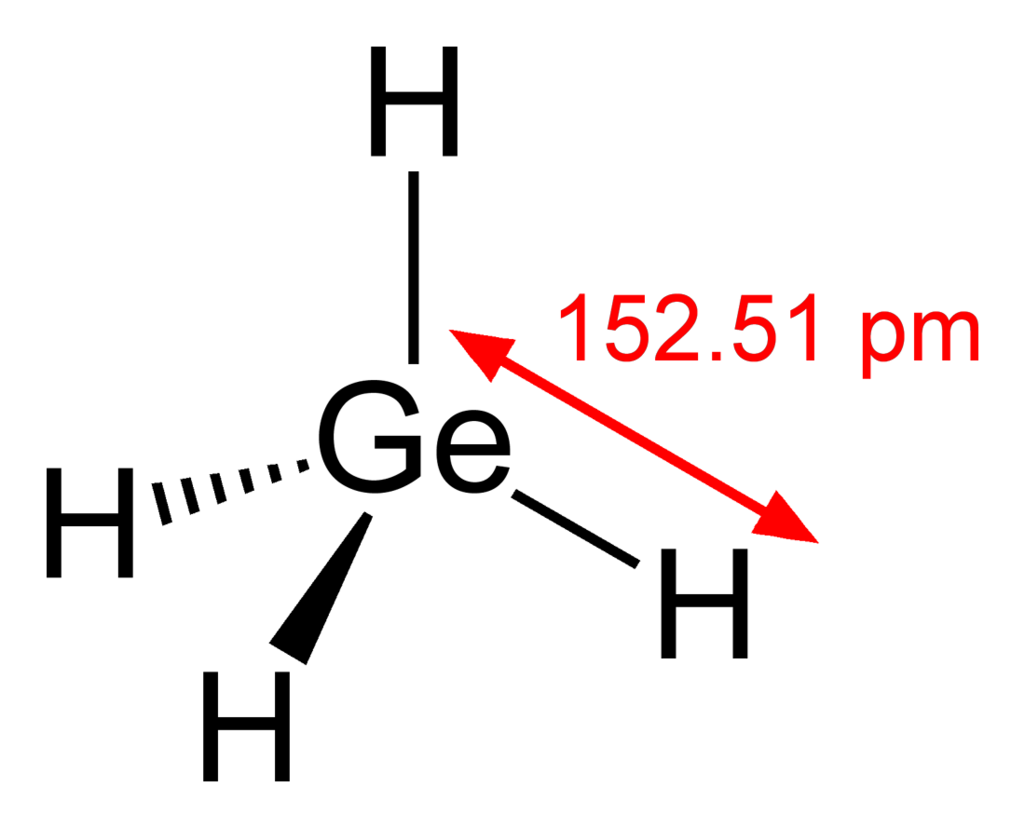Germane, known scientifically as GeH4, is a colorless gas with a distinctive pungent odor. Classified as germanium tetrahydride, germanium hydride, or monogermane, this compound holds significance in the electronics industry. However, its properties demand careful handling and monitoring due to its flammability and toxic nature.
Names and Numbers:
Other Names: Germanium Tetrahydride, Germanium hydride, Monogermane
Chemical Formula: GeH4
CAS Number: 7782-65-2
Industry Uses:
Germane finds application in the electronics industry, contributing to the production processes. Its use is prevalent in the creation of electronic components, showcasing its importance in technological advancements.
What is Germane:
Germane is a colorless gas with a pungent odor. Its properties, such as flammability and toxicity, make it a substance that requires careful handling. Containers of germane can explode when exposed to fire or intense heat, leading to potential hazards. The gas is flammable, and its vapors can form explosive mixtures with air, presenting additional risks.
Germane Exposure and Health Risks:
Exposure to germane poses severe health risks. The gas is toxic and can be lethal when inhaled. Respiratory irritation, drowsiness, and dizziness are common symptoms of germane exposure. Additionally, germane can cause kidney damage, nausea, vomiting, and difficulty breathing. Direct contact with the skin or eyes can lead to irritation and chemical burns.
Regulations:
Regulatory bodies, including the Environmental Protection Agency (EPA), Occupational Safety and Health Administration (OSHA), and the National Institute for Occupational Safety and Health (NIOSH), have established exposure limits to protect individuals from the potential hazards associated with germane.
Exposure Limits:
- Not Recommended (AEGL-1, 8 hrs) – EPA
- 0.020 ppm (AEGL-2, 8 hrs) – EPA
- 0.91 ppm (AEGL-3, 10 min) – EPA
- 0.060 ppm (AEGL-3, 8 hrs) – EPA
- 0.2 ppm (TWA, 8 hrs) – OSHA
- 0.2 ppm (TWA, 8 hrs) – NIOSH
Sources: NIOSH, OSHA, EPA
Monitoring and Measurement:
Monitoring germane concentration in the air is critical for ensuring a safe working environment. Measurement is typically done in parts per million (ppm), and various monitoring tools are available. These include portable and fixed germane monitors and kits. Regular calibration of these devices is essential to maintain accurate gas measurements.
Calibration Services:
To ensure the reliability of gas measurement devices, yearly calibration is necessary. Calibration services are available, offering specific procedures for each manufacturer’s equipment. Costs for calibration may vary based on the type of component and service required.
Calibration Costs:
- Calibration Fee: $150
- Analyzer Calibration Fee: $300
- PM Calibration Sensor Fee: $330
- Genie Calibration Fee: $265
- ATI Calibration Fee: $205
Note that prices are subject to change based on labor and parts required.
In conclusion, germane, with its unique properties and industrial uses, demands careful consideration and adherence to safety measures. Regular monitoring, adherence to exposure limits, and proper calibration of monitoring devices are key components of ensuring a secure working environment. If you need assistance in selecting the right monitoring solution or calibration service for your application, feel free to contact us for expert guidance. Your safety is our priority.
All of our Germane sensors can be found here: https://www.gas-sensing.com/support/gas-information/germane.html


